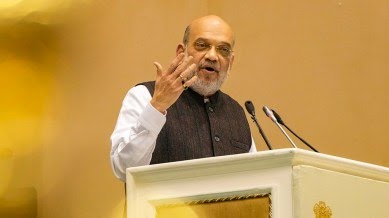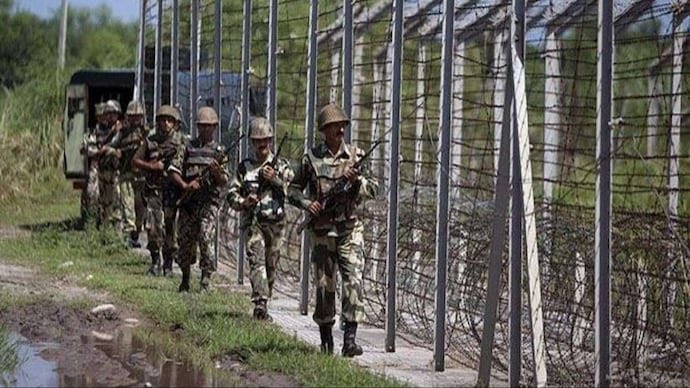On February 8th, Union Home Minister Amit Shah made a significant announcement, revealing the Ministry of Home Affairs’ decision to abolish the Free Movement Regime (FMR) between India and Myanmar.
This move marks a pivotal shift in border policies, as India promptly suspends the FMR along the Myanmar border, mandating visas for individuals residing in border areas who seek entry into India. Shah attributed this decision to Prime Minister Modi’s firm commitment to fortifying India’s borders. The primary objective behind scrapping the FMR is to bolster internal security measures and preserve the demographic integrity of India’s North Eastern States that share borders with Myanmar.

Notably, this announcement closely follows Shah’s recent declaration regarding India’s ambitious plan to erect a fence along the entire 1,643-kilometre-long India-Myanmar border.
The Free Movement Regime, which previously permitted individuals living in proximity to the India-Myanmar border to traverse 16 kilometres into each other’s territories without documentation, now stands suspended. This regime, implemented to foster cross-border interactions, has been supplanted by a more stringent visa requirement.
Border Security Measures: Introduction of Border Fencing
The decision to construct a fence along the entirety of the 1,643-kilometer border underscores India’s commitment to enhancing border security. Shah emphasized that the fence, coupled with a planned patrol track along the border, aims to facilitate more effective surveillance, thereby bolstering India’s defensive capabilities.
Indeed, these developments signal a shift in India’s border management strategies, reflecting a positive approach towards safeguarding national interests and fortifying territorial integrity.
Amit Shah Posted on Social Media
In a significant development, Union Home Minister Amit Shah took to X (formerly Twitter), where he conveyed, “Since the Ministry of External Affairs is currently in the process of scrapping it, MHA has recommended the immediate suspension of the FMR.” This announcement underscores the Ministry of Home Affairs’ proactive stance in addressing border security concerns.

Impact on the India-Myanmar Border Regions
The India-Myanmar border, negotiating through Mizoram, Manipur, Nagaland, and Arunachal Pradesh, previously operated under the Free Movement Regime (FMR), which is now abolished. Instituted in 2018 as part of India’s Act East policy, the FMR facilitated cross-border movements without stringent documentation requirements. However, its abolition signifies a strategic shift towards bolstering border security.
The call for border fencing has long been championed by Imphal Valley-based Meitei groups, citing concerns over tribal militants exploiting porous borders to infiltrate Indian territory. This demand resonates with broader regional security imperatives, necessitating robust measures to fortify border integrity.
Against the backdrop of evolving geopolitical dynamics, the decision to scrap the FMR underscores India’s commitment to reevaluating its security architecture in alignment with national interests and regional exigencies. As such, the move reflects a nuanced approach towards safeguarding territorial sovereignty and mitigating security risks along the India-Myanmar border.
Diverse Reactions from North Eastern States
Reactions from various North Eastern border states reflect the various perspectives surrounding the decision to implement border fencing and cancel the Free Movement Regime (FMR).
Meitei groups assert concerns about narcotics smuggling across the unfenced international border, highlighting the security vulnerabilities that necessitate stricter border controls. Conversely, Kuki-Zo people express apprehensions about the potential severance of ethnic ties resulting from border fencing, while Meitei organizations applaud the measure as a means to curb illicit activities.
The Mizo Zirlai Pawl (MZP) emphasizes the divisive impact of border fencing on the Zo ethnic community, lamenting the potential erosion of cultural and social bonds. Mizoram’s government and the Central Young Mizo Association (CYMA) reject border fencing, citing historical grievances and the imposition of colonial borders without consultation.
Naga bodies in Manipur voice strong opposition to border fencing and the FMR’s cancellation, underscoring the importance of maintaining cross-border interactions and preserving cultural heritage. In contrast, Arunachal Pradesh Chief Minister Pema Khandu lauds the decision to fence the border as a crucial step towards bolstering security and thwarting illicit border crossings.
While the move to fence the rugged and densely forested India-Myanmar border poses logistical challenges, it represents a strategic imperative to enhance border security. Talks are underway to initiate the tendering process for an advanced smart fencing system, signalling a commitment to fortifying border defences.
In light of the deteriorating security situation in Myanmar’s Rakhine State, the Indian foreign ministry issued a travel advisory, urging Indian citizens to refrain from travelling to the region and advising those already present to evacuate promptly. This advisory underscores India’s proactive stance in safeguarding the welfare of its citizens amidst escalating regional tensions.



